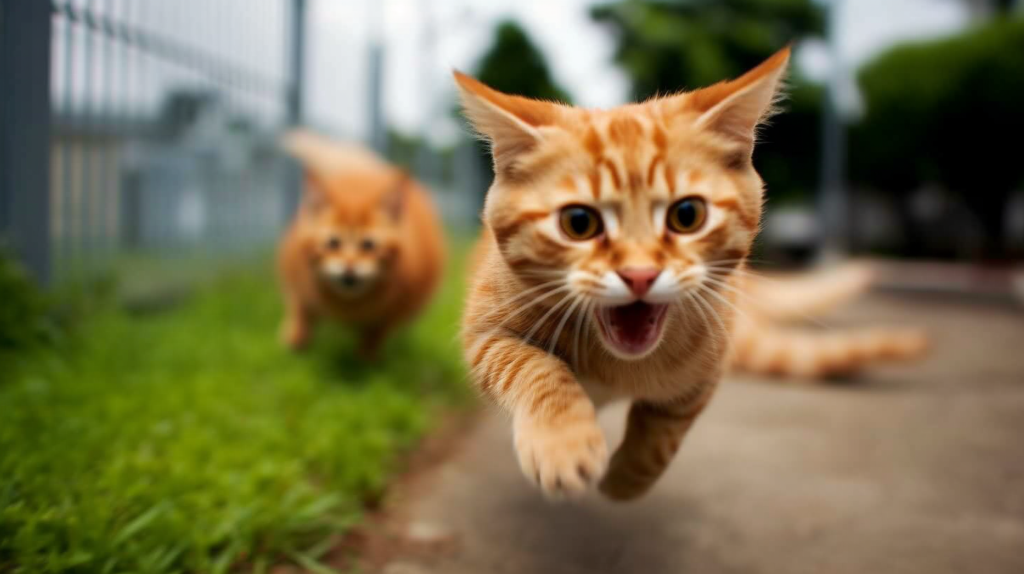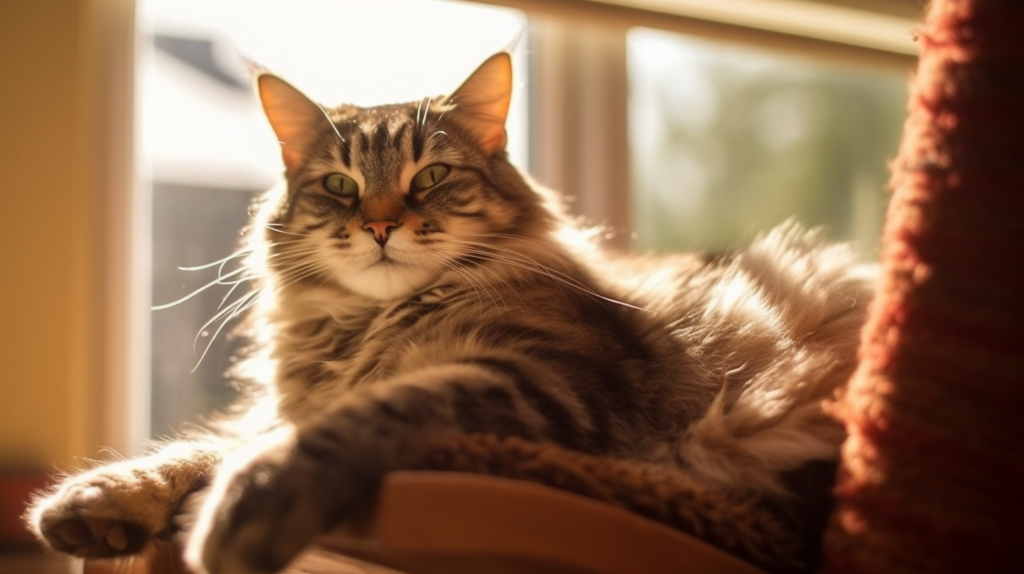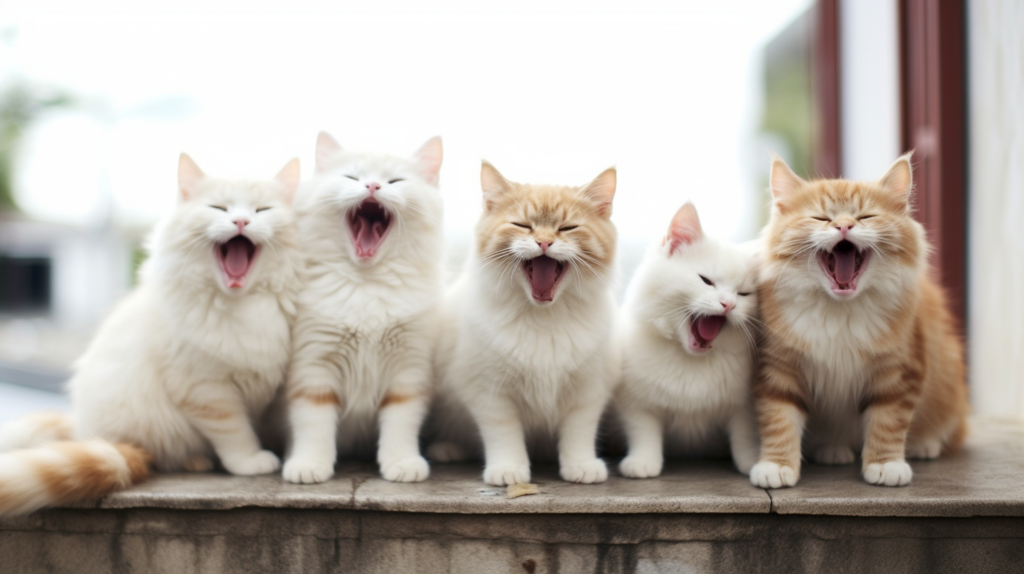Introduction
Greetings to all cat lovers! If you’re reading this, you may have wondered do cats like being chased. This question is interesting, but don’t worry; we’ll take a cat-themed journey to answer it and other questions about cats. Let’s get started!
Do Cats Enjoy Play Chasing Games?
There isn't one right or wrong answer. Just like people, every cat has their personality and likes. Some cats might enjoy a good chase, but others might find it upsetting. The key to answering this question is to know how your cat moves and acts.
The Chase: A Game or a Threat?
The chase is an idea that has been around since the beginning of time. It’s often a matter of life and death in the animal world. But when it comes to our cats, the chase can mean many different things. Is it an exciting game, a scary threat, or something else? Let’s learn more about this exciting part of how cats act.
The Chase as a Game

Cats are natural hunters, and their offspring inherit this trait, as seen in how they play by chasing after interactive games. They may sprint away swiftly when they see you coming, only to double-check that you still need to follow them. They may be chasing their tails, toys, or other animals. This chase is exciting because the cat’s movements are light and bouncy, its eyes are bright, and its body is relaxed.
Cats gain from playing chase games. Respect your cat’s preferences when it comes to playing, and don’t force them into activities they don’t enjoy. Encourage cat’s hunting instinct while keeping them safe.
The Chase as a Threat
It is important to note that chasing can also pose a hazard when a third party initiates the pursuit, such as a person, a cat’s owner, another pet, or even a dangerous animal.
When being pursued against its will, a cat’s body language often reflects the fear or stress it is experiencing. They might want to escape and hide, their ears press closer to their head, and their tail swells up. They may exhibit hostility in certain circumstances, such as hissing or swatting at others.
They instinctively flee when chased to avoid other animals. Chasing can make them feel stressed and anxious, which is terrible for their health. Only chase them if you are sure they like it.
Understanding Cat Body Language
Cats are experts at communicating their feelings and intentions through their body language. Knowing how to read your cat’s body language is essential to respond appropriately to your feline friend’s demands and emotions. Learning more about the language cats use with their bodies would be interesting.

- The Eyes: The eyes of a cat reveal much about its mental condition. Wide-separated pupils may indicate excitement, fear, or violence, while those closely set may show contentment or wrath. When cats blink slowly, it’s their way of establishing trust and respect toward their human companions. It’s also a way of communicating love to them.
- The Ears: Their ears are like radar, continually scanning the environment for any sound that might be approaching. Pushed-forward ears indicate enthusiasm or interest, while ears flattened against the head show hostility or fear. Ear twitching or flicking in a cat may indicate anxiety or irritation.
- The Tail: The cat’s tail is one of its most expressive parts. When a cat’s tail is high and straight up, it often means it is happy and sure of itself. When the bottom is low or tucked under, it can mean the cat is scared or giving up. A puffed-up tail is a clear sign of fear or violence, and a whipping seat can mean the animal is upset or excited.
- The Body: A calm cat will have a loose, relaxed body, while a tense one will shrink or try to enlarge itself to appear more threatening. Lying on one’s back can be a sign of trust and relaxation for a cat, but it can also be a defensive stance.
- Vocalizations: Even though it is not considered body language, a cat’s vocalizations can also reveal insightful information about the condition of their emotions. Purring is a sign of satisfaction in most cases, but it can also signify tension or discomfort in some cases. Hissing and growling are unmistakable indications of either fear or anger. Meowing can convey various meanings based on pitch, volume, and environment.
– Is Chasing Behavior Healthy for Cats?
Many experts believe that the joy of cat peeking around is natural behavior for felines. While some may view it as chasing, it can actually be a form of play or exercise for cats. As long as it does not lead to stress or distress, chasing behavior can be healthy for cats.
Chasing Games: Fun or Frightening?
There are many strange things about cats, and how they act when chased is one of them. Some cats find it an exciting game that makes their hearts beat faster. For some, it’s a scary situation that makes them want to hide. Let’s learn more about these different points of view.
The Joy of the Chase
Being chased by these cats is just another round of a dangerous game of tag for them. It gives them a chance to exercise their natural inclination to hunt while allowing them to have some fun. Younger kittens are usually high-energy cats and love to play.

Chasing for a cat isn’t just a game; it’s an experience. This opportunity allows them to put their minds and bodies to work. Running helps keep them physically solid and elegant, while the mental challenge of outwitting their pursuer helps keep their cognitive skills fresh.
In addition, cats that love the experience of being chased frequently display certain behaviors. They may start the pursuit by running away when they see you coming, only to stop and wait to see if you continue after them. They may also exhibit playful body language, such as wagging their tail and looking around with bright eyes.
The Terror of the Pursuit
However, some love playing chase, while others do not. There are those people who find it to be a genuinely terrifying experience. Phobias can develop from past trauma, personality traits, or not realizing that the chase should be fun.
When afraid of being chased, a cat may show signs of dread or tension. These can include things like your pet’s pupils being bigger, their ears getting flatter, and their tail getting bigger. They might also flee and hide at the first hint of pursuit, and if they find themselves in a confined space, they might even become hostile.
Cats instinctively run away when chased to keep themselves safe from dangers like other animals, which can cause significant stress and affect their overall health and well-being.
How to Play with Your Cat Without Scaring Them

- Understand Your Cat’s Play Preferences: Each cat has their preferences regarding play. While some cats may love a fierce game of sport, others could have a more vital choice for a more laid-back approach. Please pay close attention to how your cat responds during playtime so that you can figure out what activities they prefer and which ones they do not.
- Use Appropriate Toys: Cats are natural hunters, and toys that look like their prey can keep them busy for hours. Feather wands, laser pointers, and small moving toys can spark your cat’s hunting habits. Remember that the goal is to let your cat “catch” their food occasionally so they don’t get too frustrated.
- Create a Safe Environment: Make sure the environment your cat plays in is risk-free and clear of anything that could hurt them. Take away any breakable objects that might get damaged throughout the game. In addition, make sure there are secure areas in your home where your cat may go if they start to feel overwhelmed.
- Respect Your Cat’s Boundaries: Cats, similar to people, require their personal space to be respected. It is essential to call a stop to the game whenever your cat gives you any indication that they have had enough, such as by walking away or showing signs of agitation.
- Use Treats for Positive Reinforcement: By providing your cat a treat after a good game, you can help it associate good feelings with playing. Your cat might be more likely to play with you if you do this.
- Regular Play Sessions: When it comes to playtime, consistency is essential. Playing with your cat can make it happier and healthier by reducing stress and burning off energy.
Conclusion
Do cats enjoy being chased? As we’ve discovered, the solution is unique to each cat. While some people like a good chase as part of their play, others may find it stressful and frightening. Understanding your cat’s body language and behavior, as well as respecting their boundaries, are critical. After all, a contented cat makes a contented home!

Hello there, I am Iftekhar Ahmed. I am the owner of Mishka & The Cat Corners. I love to explore and write on various topics about cats

